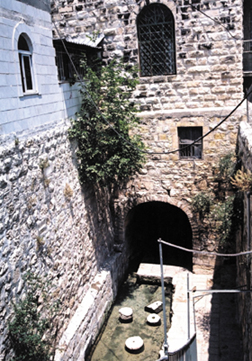
Geotimes Home | AGI Home | Information Services | Geoscience Education | Public Policy | Programs | Publications | Careers

 The Siloam Tunnel
in Jerusalem, Israel, was actually built when the Bible says it was, according
to new geological dating. The first well-identified biblical structure to be radiometrically
dated, the man-made tunnel is around 2,700 years old and has carried water into
old Jerusalem near-continuously since 700 B.C., says Amos Frumkin of Hebrew University
of Jerusalem, lead researcher on the project.
The Siloam Tunnel
in Jerusalem, Israel, was actually built when the Bible says it was, according
to new geological dating. The first well-identified biblical structure to be radiometrically
dated, the man-made tunnel is around 2,700 years old and has carried water into
old Jerusalem near-continuously since 700 B.C., says Amos Frumkin of Hebrew University
of Jerusalem, lead researcher on the project. |
Geotimes Home | AGI Home | Information Services | Geoscience Education | Public Policy | Programs | Publications | Careers |